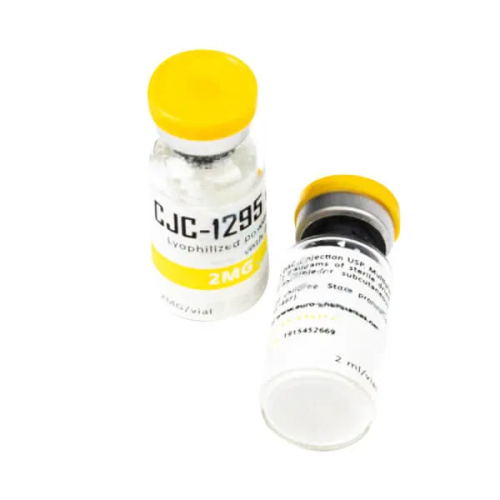CJC-1295 2mg (Euro-Pharmacies, Europe)
- Brand: Euro-Pharmacies, Europe
- Product Code: CJC-1295 2mg (Euro-Pharmacies, Europe)
- Availability: In Stock
-
$55.00
Manufacturer: Euro-Pharmacies, Europe
Pharmaceutical name: Modified GRF (1-29)
Pack: 1 vial (2 mg)
CJC-1295 is a synthetic analogue of growth hormone releasing hormone (GHRH) consisting of 30 amino acids. It has demonstrated significant efficacy in enhancing growth hormone secretion and IGF-1 levels while not adversely impacting the pulsatile nature of GH release.
CJC-1295 is frequently paired with Ipamorelin due to its heightened specificity as a GHRH. Ipamorelin produces similar increments in growth hormone release, but lacks the appetite stimulation and increases in cortisol, acetylcholine, prolactin, and aldosterone that are observed with other peptides in the same category. This peptide is well-tolerated and works synergistically with Ipamorelin.
Gland Stimulated: Pituitary
Advantages of CJC-1295:
Enhanced growth hormone release and IGF-1 levels without elevating prolactin
Increased body weight and length through boosted protein synthesis
Augmented muscle growth
Enhanced bone density
Strengthened immune function
Improved cognition and memory
Boosted collagen production
Enhanced fat loss
Improved cellular repair and regeneration
CJC-1295 also promotes slow-wave deep sleep, which is crucial for maximizing muscle growth, memory retention, and rejuvenation.
Two forms of CJC 1295:
GHRH (growth hormone releasing hormone) is synthesized in the hypothalamus. Its pulsatile release prompts a corresponding release of GH from the pituitary gland. GHRH has a very short half-life of just a few minutes (half-life refers to the duration needed to reduce half the substance from the bloodstream; shorter half-lives mean quicker clearance and diminished effects).
The active segment consists of the first 29 amino acids of GHRH, which can be synthesized as a peptide known as Sermorelin. Sermorelin was further modified to extend its half-life to 30 minutes, thus becoming CJC 1295. Additional modifications led to the development of CJC 1295 + DAC (Drug Affinity Complex), which binds to albumin, a blood protein, thereby prolonging its half-life to 8 days. CJC 1295 can also be formulated in a non-DAC version that simulates a more natural physiological GH spike each night.
The extended half-life from DAC's binding to albumin means that injections are only needed once or twice a week. However, this long half-life and relatively stable blood levels provide a continuous stimulus for GH release from the pituitary via the GHRH receptor, which does not reflect physiological conditions. This can lead to a decrease in GH pulse amplitude, consequently reducing GH tissue stimulation.

